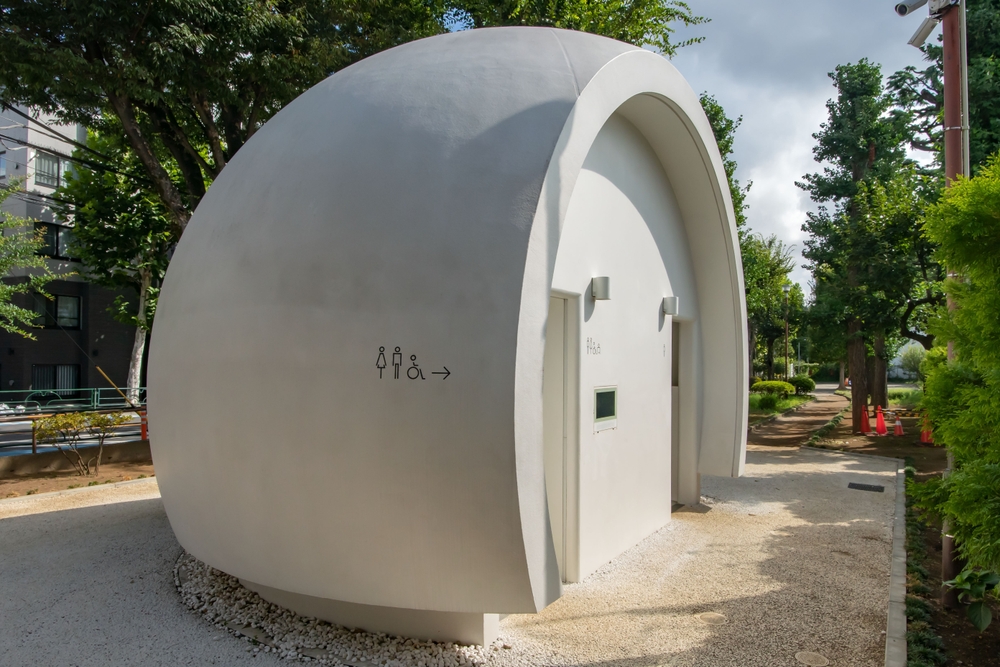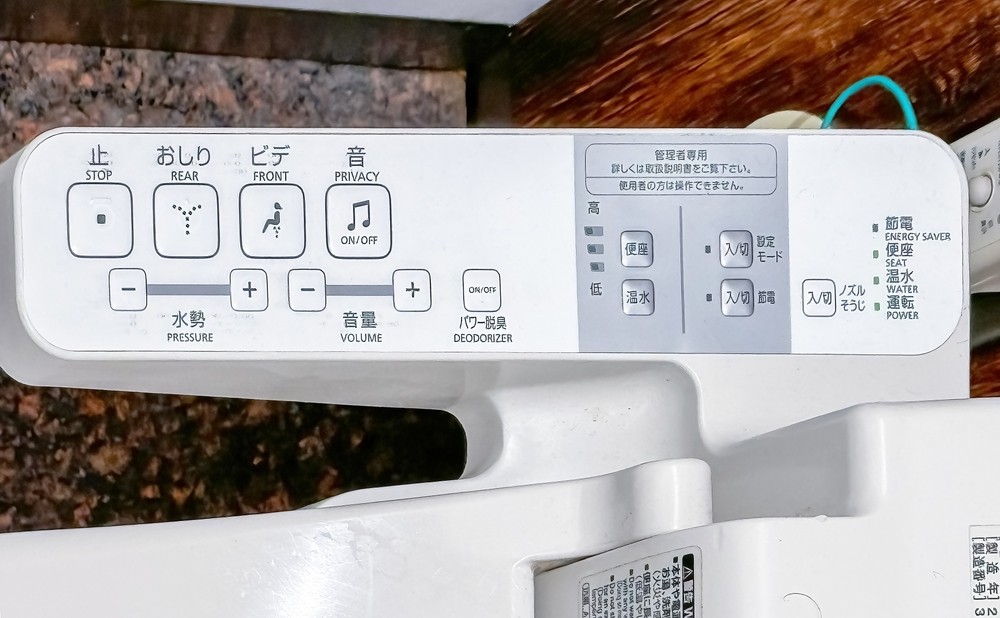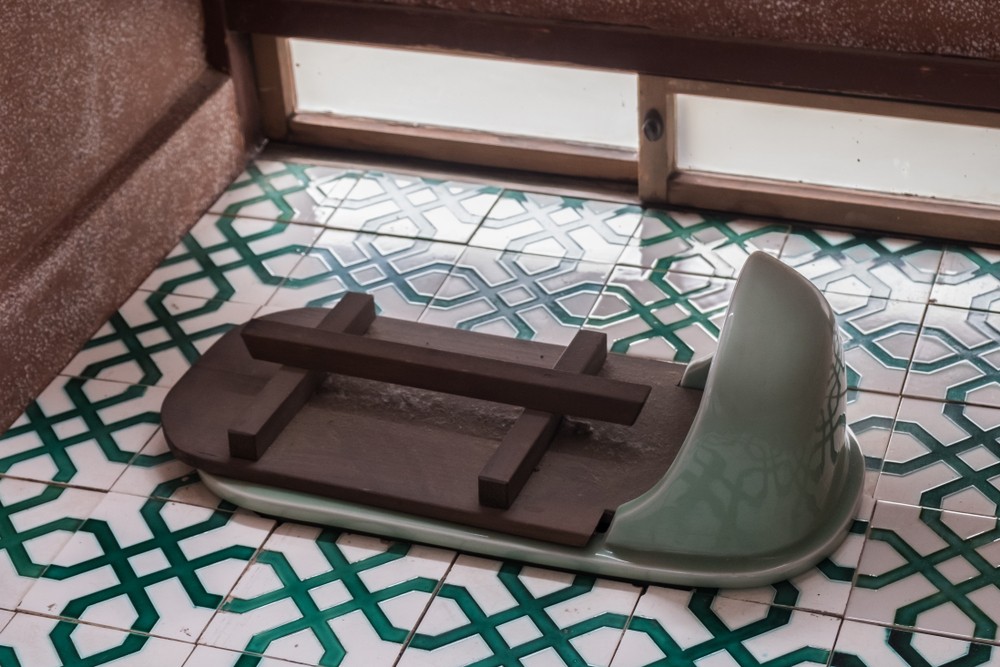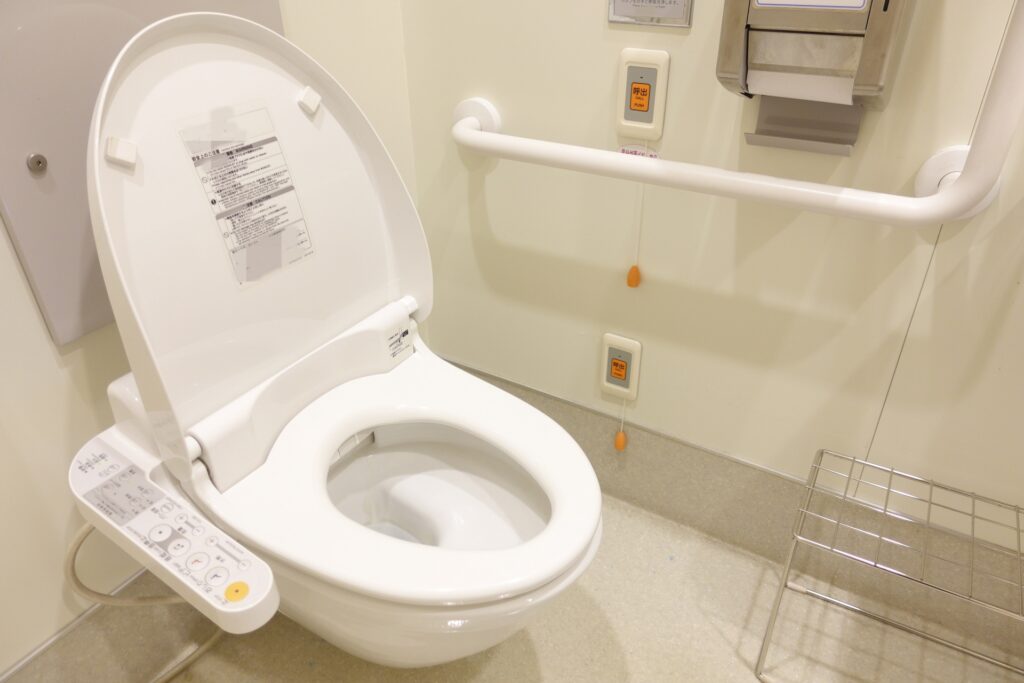
Japan’s bathroom tech just took a major leap. In July 2025, TOTO announced that its next-generation Neorest LS-W and AS-W smart Japanese toilets, launching in Japan on August 1, 2025, will include an integrated “Stool Scan” sensor that turns your daily bathroom visit into a gentle health check https://mainichi.jp/english/articles/20250717/p2a/00m/0bu/009000c. Using an LED light mounted beside the Washlet nozzle, the system scans stool as it falls into the bowl and automatically evaluates shape (hardness), colour, and volume, drawing on a classification method informed by the Bristol Stool Scale. With one push of a personal ID button (or pairing via Bluetooth), data is sent to the free TOTO Wellness smartphone app, where users can review trends on a calendar, see weekly/monthly summaries, and receive lifestyle nudges—think hydration, fibre, or activity reminders tailored to recent patterns. Up to six household users can register for the same toilet, making it a family-friendly wellness tool. Pricing in Japan is expected to range roughly ¥493,900–¥542,300, depending on model.
Your stool can provide important information about your health. Its colour, shape and odour can indicate digestive disorders and Dysbiosis or gut imbalance. Importantly, TOTO clarifies the feature is for daily wellness support, not a medical diagnostic device. Still, it reflects a broader shift: the humble toilet becoming a gateway to proactive, data-informed self-care.
🚽 Japanese Toilets Have Come a Long Way
Over the past few decades, Japanese toilets have undergone a dramatic transformation. In the past, squat-style “washiki” toilets were the norm, and in some rural areas, non-sewer systems like “pit latrines” were still common. But today, sleek, Western-style toilets with built-in bidet functions, seat warmers, and even health sensors have become the standard. Japan has also made great strides in designing toilets that are accessible for elderly people and individuals with disabilities, ensuring dignity and ease of use for everyone.
To truly appreciate how far Japan has come, let’s take a brief journey through the history of Japanese toilets—from the noble court of the Heian period to today’s smart restroom technology.
🏺 From Riverbanks to Fertiliser: The Early History of Japanese Toilets
The story of Japanese toilets begins surprisingly early—dating back to the Jomon period (around 14,000–300 BCE). Archaeological finds from the Torihama Shell Mound site in present-day Fukui Prefecture suggest that people used rudimentary toilets constructed by driving stakes into the riverbank and placing planks across them, much like a small pier. Waste would fall directly into the water, relying on nature’s cleansing power. These “eco-toilets” were common throughout the Jomon and Yayoi periods.
🛖 Asuka to Heian Period: From River Toilets to Aristocratic “Portable Potties”
In the Asuka period (6th–8th century), most toilets were pit latrines, where a hole was dug in the ground and a board was placed over it. However, in the Fujiwara-kyō (藤原京), the Imperial capital at that time, there seemed to have been more sophisticated toilets. People began channelling river water into their homes using bamboo pipes. This allowed for basic indoor toilets.
In the Heian period (794–1185), noble families favored a new style: the hibako (樋箱)—a wooden box lined with sand, essentially an early chamber pot. After use, the waste and sand were thrown away together. Meanwhile, on Mount Koya, a temple complex founded by Kobo Daishi (Kukai), monks used leftover water from kitchens and baths to flush waste through primitive drainage systems. This was arguably Japan’s first example of a water-flushing toilet system, and some examples of this so-called Koya-style toilet remained in use well into the postwar era.
⚔️ Kamakura to Sengoku Period: Waste Becomes a Resource
During the Kamakura period (1185–1333), Japan saw the emergence of “kumitori-shiki” (汲み取り式) toilets—latrines that stored human waste in underground pits. These appeared alongside the promotion of double-cropping (rice and wheat) by the Kamakura shogunate. Human waste became a valuable fertilizer, encouraging the development of collection and storage systems.
From this era through the Sengoku period (15th–16th century), toilets that had once been located outdoors or under eaves began to be installed inside houses, especially in samurai residences. This was partly for safety—leaving the house to use the toilet posed a security risk during times of conflict.
🏙️ Edo Period: The Rise of the Circular Economy
The Edo period (1603–1868) saw a well-organised waste management economy flourish. Human waste was no longer seen as something to be disposed of—it was traded as fertiliser, often in exchange for vegetables from nearby farming villages. Entire distribution networks were formed, and boats carried “night soil” to the outskirts of the city. This established a sustainable agricultural cycle and made waste a commercial product—a remarkable example of early environmental thinking in urban Japan.
In Edo-era cities, most commoners, especially those living in rowhouses (nagaya), relied on shared communal toilets known as “sōkōka” (惣後架). These simple facilities featured wooden plank floors with a rectangular hole in the centre. Although privacy was minimal: the door only covered the lower half, so anyone approaching could easily see inside if the person was squatting down, it was a very public experience by modern standards.
Meanwhile, in Kyoto, people placed pee-collection buckets near street intersections, often beside wooden gates known as kido. These public urinals, called “tsujibenjo” (辻便所), were designed to collect urine to sell as fertiliser—an ingenious solution that turned waste into a valuable agricultural resource.
🕰️From Meiji era to the Present time: Modernisation and then the Rise of the High-Tech Toilet
Japan’s toilet culture has undergone remarkable transformation since the Meiji era (1868–1912), when Western-style sewage systems and flush toilets were first introduced to urban areas. While most people still used traditional squat toilets, human waste was often reused as fertiliser. Throughout the Taisho (1912〜1926) and early Showa (1929-1989) periods, public hygiene awareness grew, and flush toilets gradually became more common in cities. After World War II, Japan entered a rapid modernisation phase, especially during the 1960s economic boom. Modern toilets with sewer connections became standard, and by the 1980s, innovations like the Washlet by TOTO—featuring built-in bidets—revolutionised bathroom technology.
In the Heisei (1989-2019) and Reiwa (2019-) eras, Japan solidified its reputation as a leader in high-tech toilets. Features like heated seats, deodorising systems, touchless flush, and even music for privacy became widespread. Today, public toilets emphasise not only cleanliness but also accessibility, sustainability, and design—exemplified by projects like THE TOKYO TOILET. From practicality to hospitality, the evolution of Japanese toilets reflects the nation’s values of hygiene, comfort, and innovation.
🚀 Modern High-Tech Toilets: Buttons, Bidets, and Beyond
Walk into almost any hotel, department store, or even convenience store in Japan today, and you’re likely to find a toilet that feels like it came from the future. These high-tech Japanese toilets, often referred to as Washlets, are globally famous for their comfort, hygiene, and clever features.
🧼 So Many Buttons—What Do They Do?

Modern Japanese toilets often come with an electronic control panel on the side, or mounted on the wall, offering functions such as:
- Bidet (ビデ): A gentle water spray for cleaning after using the toilet
- Spray (おしり): A stronger spray for posterior cleansing
- Heated seat: Keeps your seat warm even in winter
- Air dryer: Dries you after using the bidet, no toilet paper needed
- Deodorizer: Neutralizes unpleasant smells automatically
- Otohime (音姫): A sound feature that mimics flushing water to mask bathroom noises
- Automatic lid and flush: Hands-free for extra hygiene
These functions can be customised for water pressure, spray position, and temperature, making the experience personal and comfortable.
🌍 Are They Foreign-Friendly?
Yes—many modern toilets include English labels or pictograms, especially in public places, hotels, and airports. Some even have multilingual voice instructions or smartphone apps that let you control the toilet wirelessly.
For first-time users, the panels can look overwhelming, but most designs use simple icons, and many toilets now include a helpful “stop” button in red or a prominent location for peace of mind.
✈️ A Global Obsession
Japanese high-tech toilets have become a pop culture phenomenon. Tourists are often surprised—and delighted—by their first encounter. Some go home wishing they could install one. TOTO and other companies now export Washlets worldwide.
♿ Accessible Toilets in Japan: Universal Design for All
Japan takes bathroom accessibility seriously. From busy train stations to quiet rural parks, you’ll find “multipurpose toilets” designed to meet the needs of elderly users, wheelchair users, and families with young children.
🛠️ Key Features of Accessible Toilets
Most universal-design restrooms include:
- Wide, barrier-free entrance for wheelchair access
- Handrails around the toilet for safe transfers
- Emergency call buttons for users who need help
- Adjustable-height sinks
- Changing tables for babies
- Ostomate facilities for users with colostomy bags
- Non-slip flooring and ample space for caregivers to assist
Some newer models even include adult-sized changing beds or voice-guided instructions for visually impaired users.
🗺️ Where Can You Find Them?
Accessible toilets are commonly found in:
- Train stations (JR, Metro, private lines)
- Airports (e.g., Haneda, Narita, Kansai)
- Shopping malls and department stores
- Theme parks (like Tokyo Disneyland and Universal Studios Japan)
- Museums and public buildings
- Parks and rest areas on expressways (サービスエリア)
Many of these facilities are clearly labeled with pictograms, and smartphone apps like “Check a Toilet” or “Toilet Finder” help travelers locate them.
🧠 Fun Facts About Japanese Toilets You Didn’t Know
Japanese toilets aren’t just high-tech—they’re also wrapped in unique cultural habits and surprising customs. Here are a few quirky facts that might make you smile (or raise an eyebrow):
🏠 Toilet Placement Matters
In many Japanese homes, the toilet is located in a separate room—often far from the kitchen or dining area. This layout is rooted in traditional beliefs about purity and cleanliness, where areas for cooking and eating should be kept spiritually and physically distant from waste-related spaces.
Some older houses even have the toilet outside the main house structure, reflecting past sanitation challenges.
📚 Toilets Are for More Than Just… Toileting
Many Japanese people keep magazines, manga, or even calendars in the toilet room. It’s seen as a private, quiet space—sometimes the only peaceful moment in a busy household. It’s not unusual to find decorative items or seasonal touches like small flower arrangements or air fresheners in home toilets.
There’s even a slang term, “benjo yomi” (便所読み), which means “reading on the toilet.”
⏱️ How Much Time Do People Spend in the Toilet?
According to several surveys, the average Japanese person spends about 15–30 minutes per day in the toilet. Some studies suggest that men spend even longer, sometimes more than an hour per week, especially when using their smartphones. In that sense, the bathroom is both a necessity and a small sanctuary.

🚪 More Than Just a Bathroom Stop
From wooden planks over riverbanks in the Jomon period to AI-powered wellness toilets in the 2020s, the story of Japanese toilets is one of continuous innovation, hygiene, and care for comfort. What might seem like an everyday necessity becomes, in Japan, an experience—often blending technology, tradition, and thoughtful design.
Whether you’re navigating a high-tech bidet in Tokyo, discovering a historic communal toilet in Edo-style architecture, or using a perfectly equipped multipurpose restroom in a station, you’ll see that Japan takes its toilets seriously—and beautifully.
So next time you visit Japan, don’t be shy about exploring its toilets. You just might discover that the most memorable part of your trip… is the bathroom.
We are happy to hear from you!! Please feel free to reach out via the Contact Form, or by Messenger or email ([email protected]), if you would like to know more about Japanese High-tech toilets.


